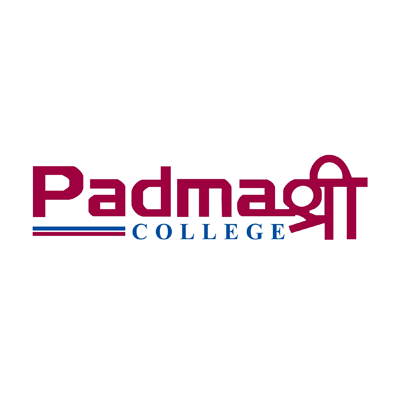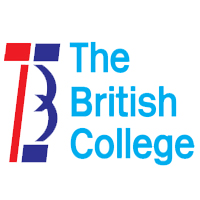Overview
Tribhuvan University, located in Kirtipur, Kathmandu, Nepal, is renowned as a premier institution for higher education. Within its esteemed Faculty of Humanities and Social Sciences, the Central Department of Fine Arts stands out as a distinguished center of learning and artistic exploration. Committed to fostering creativity, cultural understanding, and academic excellence, this department plays a pivotal role in shaping the future of fine arts in Nepal.
A Historical and Cultural Hub
Established in 1959, Tribhuvan University holds deep historical significance in Nepal's education landscape. The Central Department of Fine Arts, founded in 1982, has since become an integral part of this esteemed institution. Nestled amidst the vibrant surroundings of Kirtipur, this department provides an ideal environment for students to immerse themselves in art, culture, and heritage.
Curriculum and Programs
The Central Department of Fine Arts offers a comprehensive range of programs and courses, catering to students' diverse interests and aspirations. The curriculum covers various disciplines, including painting, sculpture, printmaking, ceramics, art history, and art education. Students have the opportunity to explore both traditional and contemporary art forms, encouraging innovation and artistic expression.
Faculty and Experts
To ensure a high standard of education and mentorship, the department boasts a team of highly skilled faculty members and renowned experts in the field of fine arts. These dedicated professionals bring a wealth of experience, expertise, and a passion for nurturing young talent. With their guidance, students receive personalized attention, constructive feedback, and invaluable insights into the world of art.
State-of-the-Art Facilities
Recognizing the importance of well-equipped facilities in promoting artistic growth, the Central Department of Fine Arts provides students with state-of-the-art infrastructure. The department houses spacious studios, specialized workshops, a well-stocked library, and exhibition spaces. These resources enable students to hone their skills, experiment with different mediums, and showcase their artwork to the public.
Collaboration and Community Engagement
The department actively fosters collaboration and community engagement to create a vibrant and inclusive artistic ecosystem. It organizes workshops, seminars, and exhibitions, inviting renowned artists, scholars, and art enthusiasts to interact with students. Such events not only provide valuable networking opportunities but also broaden students' perspectives and inspire creativity.
Career Prospects
A degree from the Central Department of Fine Arts opens doors to a multitude of career opportunities. Graduates can pursue careers as professional artists, art educators, curators, art administrators, or art therapists. Additionally, they can explore avenues in multimedia design, advertising, animation, and art restoration. The department's emphasis on practical skills and critical thinking equips students with the necessary tools to succeed in the dynamic world of fine arts.
Why Fine Arts?
Fine Arts offers a rich and fulfilling path for those passionate about creative expression, cultural preservation, personal growth, and making a positive impact through art. It provides opportunities to explore one's creativity, connect with others, and contribute to the vibrant world of artistic expression. Choosing Fine Arts as a career or academic pursuit can be a fulfilling and rewarding choice for several reasons:
1. Creative Expression: Fine Arts offers a platform for individuals to express their creativity and imagination freely. It allows artists to communicate their thoughts, emotions, and perspectives through various art forms, such as painting, sculpture, music, dance, and more. This ability to express oneself creatively can be deeply fulfilling and provide a sense of personal fulfillment.
2. Cultural Preservation: Fine Arts plays a crucial role in preserving and celebrating cultural heritage. Artists have the power to capture the essence of their culture, traditions, and history through their artwork. By studying and practicing Fine Arts, individuals contribute to the preservation and promotion of cultural diversity and identity.
3. Emotional and Intellectual Growth: Engaging with Fine Arts promotes emotional and intellectual growth. Art has the power to evoke emotions, provoke thoughts, and challenge perceptions. Through the study and creation of art, individuals can develop a deeper understanding of themselves, others, and the world around them. It encourages critical thinking, empathy, and self-reflection.
4. Personal Development: Fine Arts nurtures personal development by fostering qualities such as discipline, patience, perseverance, and self-confidence. Artists often face challenges and setbacks during their creative journey, which helps them develop resilience and adaptability. The process of creating art also encourages problem-solving skills and enhances one's ability to think outside the box.
5. Communication and Connection: Art has a universal language that transcends cultural and linguistic barriers. It has the power to connect people from different backgrounds and create a sense of unity. Artists can communicate complex ideas and evoke emotions that words alone may fail to convey. Through their artwork, artists can initiate conversations, spark dialogue, and foster a sense of community.
6. Professional Opportunities: Pursuing a career in Fine Arts offers a wide range of professional opportunities. Graduates can work as professional artists, art educators, curators, art administrators, or art therapists. They can also explore fields such as multimedia design, advertising, animation, art restoration, and more. The demand for creative professionals exists in various industries, including entertainment, advertising, publishing, and digital media.
7. Personal Fulfillment: For many individuals, engaging with Fine Arts brings a deep sense of personal fulfillment. The ability to create something unique, express oneself authentically, and contribute to the cultural landscape can bring immense joy and satisfaction. Fine Arts allows individuals to pursue their passion and find meaning in their work.
Why Pursue MFA Degree?
Studying for a Master of Fine Arts (MFA) degree is a significant step for individuals seeking to deepen their artistic knowledge and advance their career in the field of Fine Arts. Here are the top reasons to consider pursuing an MFA:
1. Specialized Expertise: An MFA program provides a focused and in-depth study of a specific artistic discipline, allowing students to develop specialized expertise in their chosen field. Whether it's painting, sculpture, photography, printmaking, or any other discipline, the MFA curriculum delves into advanced techniques, conceptual development, and critical analysis, equipping students with a deep understanding of their craft.
2. Mentorship and Guidance: MFA programs often offer mentorship opportunities, allowing students to work closely with experienced faculty members who are accomplished artists themselves. This one-on-one guidance and feedback from established professionals can be invaluable in honing artistic skills, exploring new directions, and receiving constructive criticism to foster artistic growth.
3. Networking and Collaboration: MFA programs provide an environment that fosters collaboration and networking with fellow artists, faculty members, and visiting artists. Engaging with a community of like-minded individuals enables students to broaden their artistic perspectives, exchange ideas, and develop valuable connections within the art world. These connections can lead to future collaborations, exhibition opportunities, and professional partnerships.
4. Access to Resources and Facilities: MFA programs often provide access to state-of-the-art facilities, specialized equipment, studios, and exhibition spaces. This access allows students to experiment with different mediums, expand their technical skills, and create artwork on a larger scale. The availability of resources and facilities supports the realization of ambitious artistic projects and enhances the overall learning experience.
5. Critical Analysis and Artistic Research: MFA programs emphasize critical analysis and encourage students to engage in artistic research. Through the exploration of art history, contemporary art practices, and theoretical frameworks, students develop a deeper understanding of the cultural, social, and historical context in which their work exists. This intellectual engagement enhances their artistic practice, encourages experimentation, and fosters the development of a unique artistic voice.
6. Exhibition Opportunities: MFA programs often provide platforms for students to exhibit their artwork, both within the institution and in external venues. These exhibitions serve as valuable opportunities to showcase their artistic vision to a broader audience, receive feedback, and gain recognition within the art community. The exposure gained through exhibitions can be instrumental in establishing a professional reputation and opening doors to further career opportunities.
7. Career Advancement: An MFA degree can significantly enhance career prospects in the field of Fine Arts. It provides a competitive edge when pursuing careers as professional artists, art educators, curators, or arts administrators. The comprehensive education, technical skills, and critical thinking developed during an MFA program prepare graduates to navigate the art industry, exhibit their work in galleries, participate in artist residencies, apply for grants and fellowships, and succeed in various roles within the arts sector.
In conclusion, pursuing an MFA offers a transformative educational experience, providing specialized knowledge, mentorship, networking opportunities, access to resources, and a pathway to career advancement. It allows artists to refine their artistic practice, expand their horizons, and position themselves as dedicated professionals in the dynamic and vibrant world of Fine Arts.
Tribhuvan University's Central Department of Fine Arts stands as a beacon of artistic education, fostering talent, creativity, and cultural preservation. With its rich heritage, esteemed faculty, comprehensive programs, and cutting-edge facilities, the department continues to shape the future of fine arts in Nepal. Aspiring artists seeking a holistic and rewarding educational experience will find a nurturing home at this prestigious institution.
Contact Central Department of Fine Arts Tribhuvan University's administrative office for detailed information on the course, admissions, location, fees, scholarships, facilities, counseling, or eligibility.












